A friend recently handed me this guitar.
It has a mahogany body, two DiMaggio twin blades, in the center is a Quarter Pound single coil from an unknown maker, and a gold SCHALLER FRT-II sitting in the center.
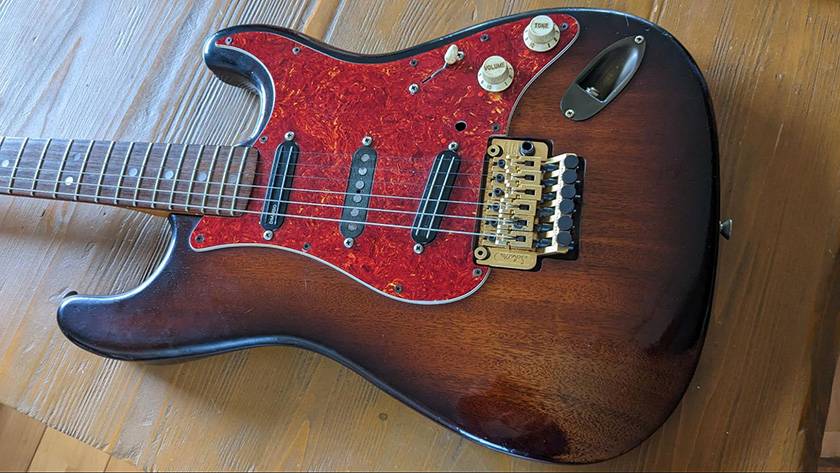

Even with the tremolo turned all the way down, the string height is quite high and the frets are worn and rattling.
But the guitar itself seems to have really good potential!
It would be a shame to let it sleep, so I'm going to bring you a series of mystery guitar repairs!
Since this is the first issue, let's first take a look at the current state of this guitar.

The body back looks like this.
I thought it was just a Schaller tension controller on it…

What the heck is this joint plate?...
It is too uneven and warped. Was it carved out with its spirit and guts? The joint screws are much thicker than those usually used in electric guitars.
I would like to take out the screws and replace the plate with a standard joint plate.
Maybe something like this one.
Freedom Custom Guitar / Tone Shift Plate SP-JP-03

The tension controller was also bent, so I want to fix this as well.

Now that I have found two parts needing repair, let's take a look at the inside of the instrument.
This ground plate is the one you sometimes see on stone logo Fernandes or the like.
I haven't seen it in a while, so I'm mysteriously excited. This is cool, so let's leave it as it is.

I also found something I didn't want to see.
It's hard to tell from the photo, but there is a crack near the bottom hole of the anchor stud….
The stud has also collapsed, and I definitely want to fix it. I would have had to re-drill the stud hole to repair the crack, but I remembered the many mistakes I made when I was a student, so I pretended I didn't see it this time and gently closed the pickguard.
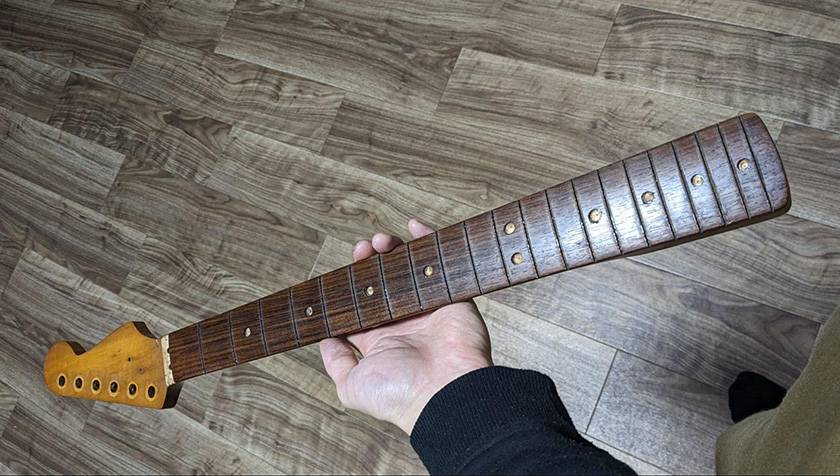
Now, let's look at the neck.
I forgot to take a picture, so here is a picture of the neck with all the frets removed and the inlays removed so I can replace the position marks. The rosewood has such a beautiful pattern!

How is the round board this luxurious?
I am very curious about the meaning of the "E0" stamp on the neck end.
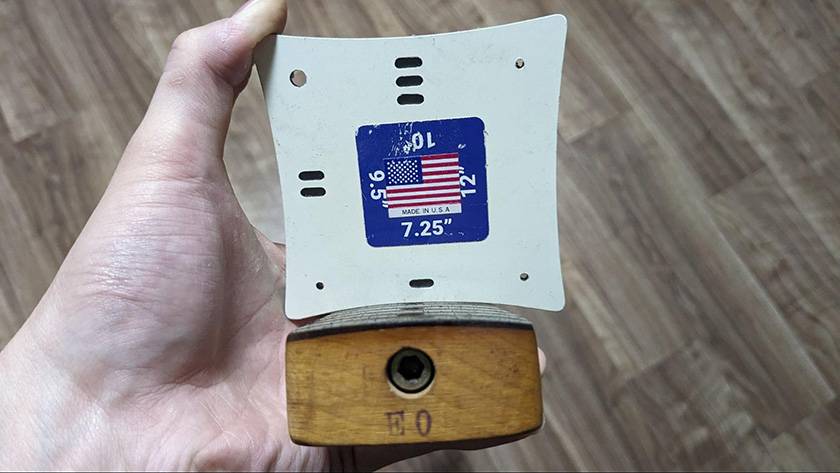
The current fretboard R is approximately 7.25 inches. Considering that the guitar is equipped with a locking tremolo, I want to change the fretboard R loosely by modifying the fretboard during the fretting process, but it is difficult with it being this thin, so I will continue the fretting process with the fretboard R as it is.
I have just reported on the current state of the guitar, but in the next article, I hope to actually start working on the guitar and introduce the tools and other useful items that I will be using.
See you again in the next article!





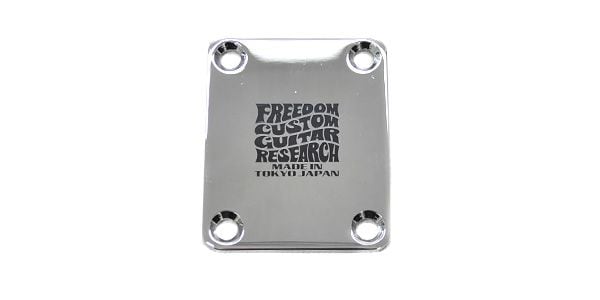
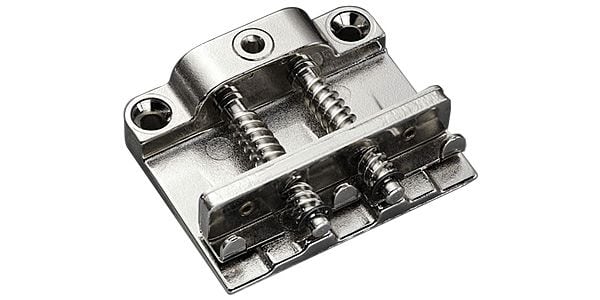

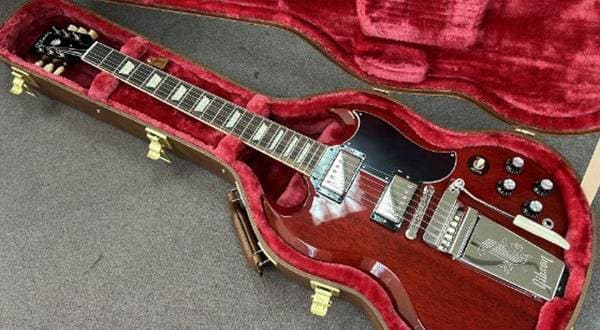
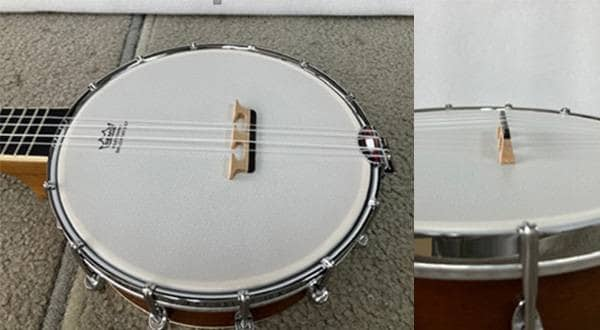

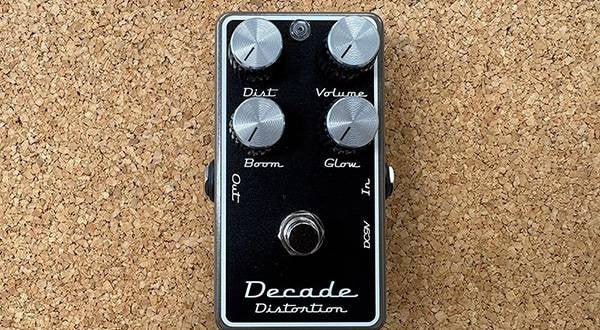
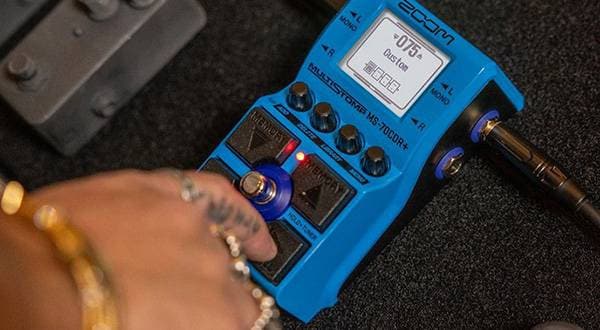

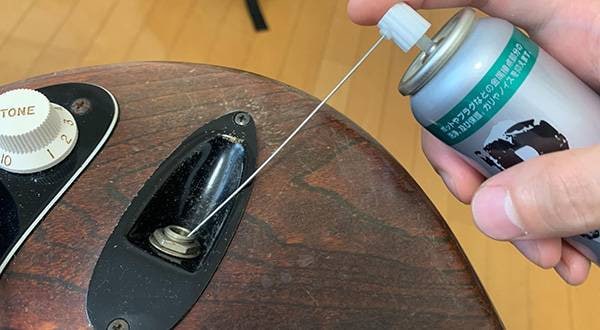
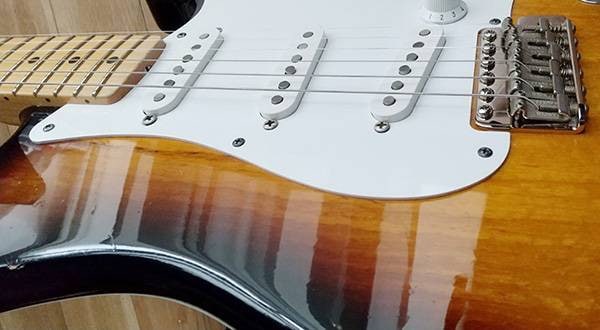


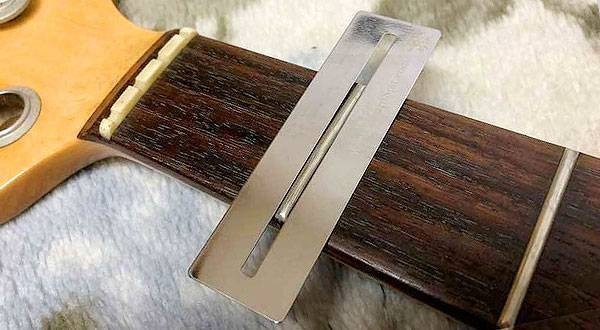
 ALLPARTS特集
ALLPARTS特集
 ギターパーツの沼
ギターパーツの沼
 DIY ギターメンテナンス
DIY ギターメンテナンス
 初心者必見!PLAYTECH 激スゴの理由!
初心者必見!PLAYTECH 激スゴの理由!
 ギター初心者ゼミ
ギター初心者ゼミ
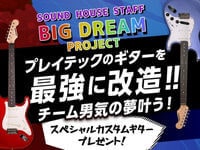 プレイテックのギターを最強に改造!!
プレイテックのギターを最強に改造!!















